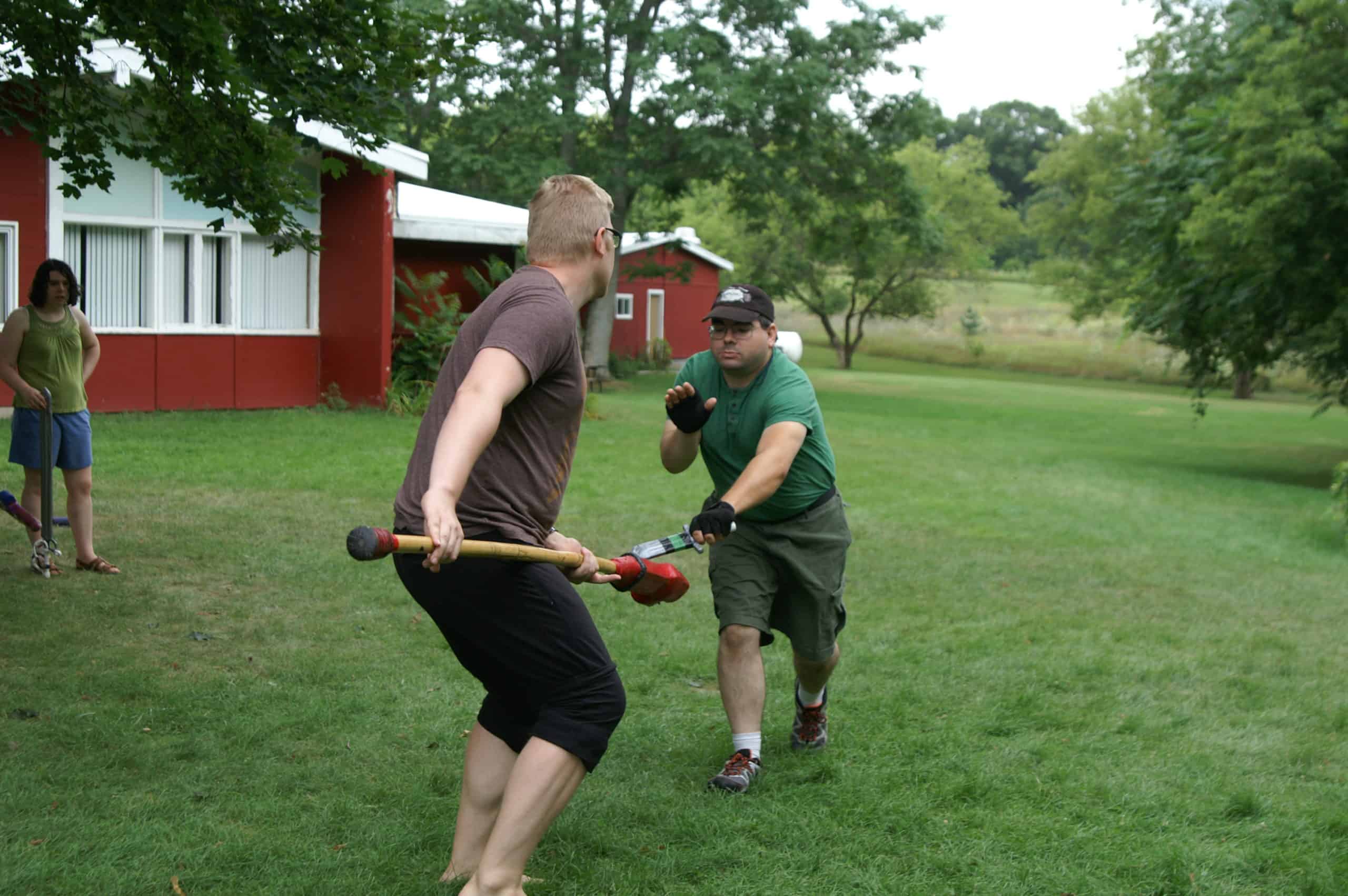Historical training sources tend to show weapons techniques to be used against the same type of weapon. Some texts do have shorter segments on mixed weapons training; yet the main focus of many historical texts is how weapons work against themselves.
From a historical perspective, it makes sense to study using a weapon against the same type of weapon. If you’re in an area where mostly one weapon is used, it is advantageous to learn to train against that weapon.
Learning martial arts in a modern context, there is a lot to be learned from mixed weapons training. At Polaris Fellowship, we focus on mixed weapons training to give a depth and breath to our students’ learning.
Mixed Weapons Training Teaches Range Complexities
It’s easy to assume that the longest ranged weapon always has an advantage over shorter range weapons. This is not necessarily true.
When two people with differently ranged weapons spar against each other, both of them have to take range into account. Let’s use the drastic example of a knife versus a hand and a half sword.
The hand and a half sword seems to have a range advantage as it has a greater reach than a knife. The knife wielder has to close in to be able to strike against their opponent.
Instead of simply applying strikes and blocks, the knife wielder also needs to use the range of the fight to create openings. They can play with the range, staying just outside of the long sword weilder’s range, causing them to over commit. They can also work to get an effective block and then quickly close, changing the range to an effective knife range.
The hand and a half sword wielder has to consider how the range might change throughout the fight, and work to keep their opponent and the most effective range for their weapon – keeping their opponent in striking distance, and not allowing them to close in.
When two weapons of the same type spar against each other, they will have some range considerations, but sparring with different types of weapons opens another level of range complexity. Working with various ranges helps each student to better understand the full breadth of the use of their own weapon. Also, it helps to integrate footwork and awareness skills into sparring.
Mixed Weapons Training Highlights Strengths and Weaknesses
Sparring with mixed weapons allows the students to explore the strengths and weaknesses of every style in combination.
You may look at a sparring match between a knife and a hand and a half sword and think that the sword has a clear advantage. This isn’t necessarily true.
Though the hand and a half sword has a longer range, it also has limitations in a match up against a knife. If knocked off of the centerline, it takes a longer time to return to the fight. Though the hand and a half is effective at farther ranges, it can be less effective at close ranges.
The strengths of a knife in this match up are the knife’s speed and mobility. Quick motions can allow the knife to move the longer weapon off line and return quickly to the centerline. The knife can be effective at the closer ranges where the hand and a half is not ideal.
Even with these strengths, winning a sparring match against a hand and a half sword with a knife can be a challenge. When we match our students with various weapons, we ask them to try various techniques to overcome that challenge. Trying to overcome the challenge allows our students to explore the full potential of their weapon.
Want to know more?
From the beginning of their training, students at Polaris Fellowship drill and spar against various weapons types. This helps to broaden their learning. With mixed weapons training, the students are able to explore the strengths and weaknesses of each weapon.
Interested in learning more about the training at Polaris? Contact us!
